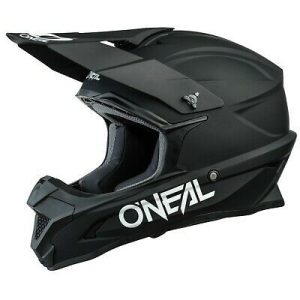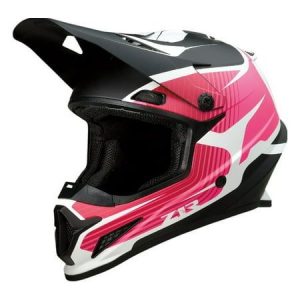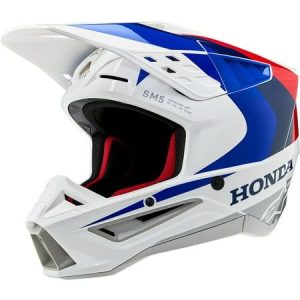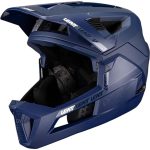For motorcycle riders, safety is paramount. A helmet is the single most crucial piece of protective gear, acting as your first line of defense in the unfortunate event of an accident. But a helmet’s effectiveness hinges on proper fit.
An ill-fitting helmet can be uncomfortable, impede visibility, and worse, fail to provide adequate protection during an impact. So, how do you ensure you choose the right motorcycle helmet size? This comprehensive guide will walk you through the essential steps to finding your perfect helmet fit.
Understanding Motorcycle Helmet Sizing
Motorcycle helmet sizes are typically denoted by a letter (S, M, L, XL, etc.) corresponding to the head circumference in centimeters. However, sizing can vary slightly between manufacturers, so using the size chart provided by a specific brand is always recommended.
Here’s a general breakdown of motorcycle helmet sizes by head circumference:

- Small (S): 55-56 cm (21.65-22.05 in)
- Medium (M): 57-58 cm (22.44-22.83 in)
- Large (L): 59-60 cm (23.23-23.62 in)
- Extra Large (XL): 61-62 cm (24.02-24.41 in)
- XXL: 63-64 cm (24.80-25.19 in)
- XXXL: 65+ cm (25.59+ in)
These are just general guidelines. Always refer to the manufacturer’s size chart for the most accurate measurements.
Measuring Your Head for a Motorcycle Helmet
Before diving into helmet options, it’s crucial to accurately measure your head. Here’s what you’ll need:
- Soft measuring tape (tailor’s tape recommended)
- Friend or helper (optional, but helpful)

Measuring Steps:
- Wrap the measuring tape comfortably around the largest part of your head, approximately one inch above your eyebrows. Ensure the tape is level and sits comfortably without digging in.
- Take the measurement at least twice to ensure accuracy. If you get different readings, take the larger measurement for better fit.
If you’re between sizes, it’s generally recommended to choose the smaller size. A snugger fit is ideal, as the helmet will loosen slightly over time as the padding conforms to your head shape.
Trying on a Motorcycle Helmet for Proper Fit
While getting the right size based on head circumference is a good starting point, trying on a helmet is essential for optimal fit. Here’s what to look for during a helmet fitting:
- Snug but Comfortable: The helmet should feel snug but comfortable overall. There should be no pressure points or excessive movement. You should be able to wiggle your head slightly, but the helmet shouldn’t rock back and forth.
- Cheek Pads: The cheek pads should make gentle contact with your cheeks without feeling overly constricting. You should be able to open and close your mouth comfortably.
- Forehead Pad: The forehead pad should touch your forehead lightly without pushing down on your eyebrows.
- Eye Port: The eye port should offer a clear, unobstructed view without pinching your nose or obstructing your peripheral vision. You should be able to move your head freely without the helmet restricting your vision.
- Retention System: The helmet’s retention system (chin strap) should be secure and easy to operate. It should snugly fit under your chin without causing discomfort.

Additional Tips:
- Bring your riding glasses or sunglasses to the store to ensure they fit comfortably inside the helmet.
- Move your head around while wearing the helmet to check for any pinching or pressure points.
- Speak aloud while wearing the helmet. The helmet shouldn’t muffle your voice excessively.
Considering Motorcycle Helmet Style and Features
Once you’ve established a good size and fit, you can explore different helmet styles and features that cater to your riding needs and preferences. Here’s a quick breakdown of the most common motorcycle helmet styles:
- Full-Face Helmet: Offers maximum protection for the head and face. Ideal for all riding styles, especially highway riding.
- Modular Helmet: Offers the versatility of a full-face helmet with a flip-up front section for added convenience.
- Open-Face Helmet (3/4 Helmet): Provides protection for the head, but leaves the face exposed. Suitable for slower speeds and urban riding environments.
- Half-Helmet: Minimal coverage, primarily protecting the top of the head.
Shape Matters: Recognizing Different Motorcycle Helmet Shapes
While size is crucial, another critical factor for optimal fit is helmet shape. Motorcycle helmets come in various shapes to accommodate different head shapes. Here’s a breakdown of the most common head shapes and compatible helmet styles:

-
Oval: The most common head shape, characterized by a slightly longer front-to-back measurement than side-to-side. Most helmet brands cater to oval head shapes.
-
Round: Round heads have a nearly equal front-to-back and side-to-side measurement. Look for helmets labeled “round oval” or “neutral” for a comfortable fit.
-
Long Oval: Long oval heads are similar to ovals but with a significantly longer front-to-back measurement. Helmets designed for “long oval” or “touring oval” head shapes will provide a better fit.
-
Intermediate Oval: Intermediate oval heads fall between round and oval shapes. These heads may find some “oval” helmets comfortable, while others may require trying “round oval” styles.
Finding Your Helmet Shape:
- Self-Assessment: Feel your forehead and the back of your head. If your forehead feels longer than the sides, you likely have an oval head shape. If they feel about the same, your head shape is likely round or intermediate oval.
- Manufacturer’s Guidance: Some helmet manufacturers provide guidance on head shape fit on their websites or size charts.
Trying on helmets is the most effective way to determine the best shape for your head. An experienced salesperson at a motorcycle gear store can also assist you in finding the perfect fit based on your head shape.
Safety First: Additional Considerations for Choosing a Helmet
Beyond size, fit, and style, here are some additional factors to consider when choosing a motorcycle helmet:

- Safety Certifications: Ensure the helmet meets safety standards set by reputable organizations like the Department of Transportation (DOT) or Snell Memorial Foundation (Snell).
- Ventilation: Proper ventilation is essential for comfort, especially in hot weather. Look for helmets with adjustable vents to allow for airflow.
- Visor Options: Consider the type of visor you prefer, such as clear, tinted, or anti-fog. Some helmets offer interchangeable visors for added versatility.
- Weight: A lighter helmet can improve comfort during long rides. However, prioritize safety over extreme lightweight construction.
- Noise Reduction: Excessive wind noise can be fatiguing on long rides. Look for helmets with noise-dampening features.
- Communication Systems: For riders who use intercoms or Bluetooth headsets, ensure the helmet is compatible with your chosen communication system.
Maintaining Your Helmet for Optimal Performance
A well-maintained helmet offers the best protection and comfort. Here are some tips for keeping your motorcycle helmet in top condition:

- Cleaning: Regularly clean the helmet’s exterior with a mild soap solution and water. Avoid harsh chemicals or abrasive cleaners.
- Visor Care: Clean the visor with a microfiber cloth and appropriate cleaning solution to maintain clarity and prevent scratches. Replace the visor if it becomes excessively scratched or damaged.
- Padding Care: The helmet’s interior padding can absorb sweat and grime over time. Remove and wash the liner according to the manufacturer’s instructions, typically by hand-washing with mild soap and air drying.
- Storage: Store your helmet in a cool, dry place away from direct sunlight when not in use. Avoid extreme temperatures, as heat can damage the helmet’s materials.
By following these maintenance tips, you can ensure your motorcycle helmet provides optimal protection and comfort for many rides to come.


